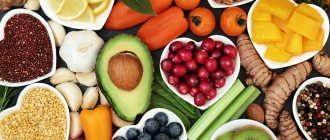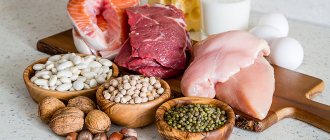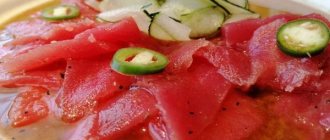Obesity in teenagers: reasons, how a teenager can lose excess weight, diet
And when you are sure that the problem lies in the nutritional culture and the lack of sports in the life of a girl or boy, you can begin to correct the daily routine.
Psychologist's comment:
You should communicate with a teenager on the topic of losing weight delicately, regardless of the stage of obesity and the reasons that led to it. The child is very vulnerable to comments and criticism, and if psychological discomfort and stress arise, eating disorders will only progress, worsening the health and atmosphere within the family.
The participation of parents and doctors in the fate of the girl must be careful and respectful - this is a prerequisite for successful treatment. There are many cases where, after consulting a nutritionist or dietitian, the body mass index increased. A concerned mother brought an overweight son or daughter, a 14-16 year old teenager was given a nutritional consultation to lose weight in order to prevent obesity, and after a few months, instead of normalizing the BMI, the opposite happened - the condition developed into a real disease. This is due to increased stress factors. High school students are very critical of themselves even without our pressure. One awkward word is enough for a child to lose optimism and return to the usual solution to problems - eating.
It is not enough to simply give useful recommendations; it is necessary to earn the young man’s trust and convince him of the need to change his life, set a worthy example, and support him with a kind word.
Principles of healthy eating
Proper nutrition for a teenager, even if he is almost an adult, is different from what adults need. This is due to metabolic processes that occur differently in children. A child's healthy body does not have chronic diseases that would require strict diets. Therefore, the main task is to give the body all the useful substances, vitamins and microelements. Thanks to them, he will develop fully, and the grown person will not have any difficulties with extra pounds or health.
Sometimes, teenagers are a little overweight. This especially worries girls. But if we are not talking about obesity, then the situation is not critical and the problem disappears as you grow older. A few extra pounds are less harmful than torturing yourself with diets, which will lead to hormonal imbalances, problems with the condition of the skin and hair, brittle nail plates and diseases such as gastritis or dyskinesia.
A healthy diet should be combined with adequate physical activity. Visiting the gym is not recommended, but walks in the park, rollerblading and cycling, horseback riding, dancing, and swimming will be useful.
The principles of healthy eating are simple:
- Every day, the body must receive the amount of proteins, carbohydrates and fats necessary to maintain strength.
- The diet must contain vitamins and microelements.
- It is undesirable to consume harmful foods and drinks.
- Portions should not be larger than your fist.
- The products consumed must be fresh and of high quality.
This last point is especially important in the case of teenagers, because food is the building material that shapes their body on the way to adulthood.
Age characteristics
Prevention and treatment of obesity in adolescents begins with determining the extent of the problem. For a detailed analysis, gender, height and body weight should be taken into account.
Here is a simplified table that will help you quickly navigate. For girls the following numbers are relevant:
Boys develop a little slower, so their indicators are different:
There is also another popular method that will help you find out whether weight loss is necessary in adolescence - this is the determination of body mass index (BMI). The interpretation is different from that used for adults. This is due to the fact that the child’s body is in a growth phase, the ratio between tissues (fat, bone and muscle) varies.
- height (meters) is squared (for example, 1.7x1.7 = 2.89);
- divide the weight (kilograms) by the resulting number (70/2.89=24.2);
- the BMI value (in our case 24) is deciphered taking into account age and gender.
For a 14-year-old boy this is a serious excess, and for a 17-year-old it is a slight excess of the norm. A special table will help you decipher the received data.
Daily calorie intake for weight loss
People who watch their weight should be able to count calories. In order not to gain weight, you need to consume a certain amount of calories. How to calculate them? To do this, your own weight in kilograms must be divided by 0.453 and multiplied by 14. If you want to lose weight, then the desired weight must also be divided by 0.453 and multiplied by 14.
When the daily calorie intake for weight loss has been calculated, you need to create a menu for the day. It should consist of low-calorie foods. However, it should be borne in mind that low-calorie foods do not satiate well, so a person begins to increase their quantity. That is, instead of two hundred grams of cottage cheese, he eats three hundred. It seems to a person that he is on a diet, but in fact he is simply stretching his stomach. It turns out that no weight loss occurs, and the weight continues to remain the same.
Counting calories is a difficult and time-consuming process. Few people dare to lose weight this way, and if they start, they give up after a while. It is much easier to stick to separate meals or follow the Dukan diet. But this is everyone's business. One suits some, the other suits others. And many people just like to complain about improper metabolism and eat tons of cakes at night. Anyone who truly wants to achieve something will definitely achieve it sooner or later. If a person wants to have a beautiful figure, and not just talk about wanting to be slim, then he will definitely be beautiful and fit. It all depends on the strength of desire.
Calculation of daily calorie intake
When a person goes on a diet, he must remember that the body needs proteins, fats, and carbohydrates. By depriving oneself of one component, a person pays with serious health problems. Calculating your daily calorie intake is not difficult, the main thing is not to overdo it. After all, if calories are less than 1200, a person simply will not be able to function normally.
If you can’t calculate calories yourself, you can contact a specialist about this problem. Today it is not difficult to find a nutritionist who, for a fee, will not only make calculations, but will help create an individual menu. After all, if a person undertakes to count calories, he must take everything into account. For example, an egg can provide different amounts of calories depending on how it was cooked. The same goes for rice, buckwheat and other products.
How to calculate your daily calorie intake
Calories are burned not only during physical activity, but also during breathing, digesting food, reading books and working at the computer. Only these processes require a small amount of energy, unlike exercise in the gym or swimming pool. An excess of calories is stored in adipose tissue, a deficiency causes the body to take calories from the body, and not only the outer shell suffers, but also the internal organs.
How to calculate your daily calorie intake? Recently, mobile phone applications have appeared that can help in this matter. There are many methods and formulas for calculating your daily calorie intake. The most popular is the Tom Venuto formula, which when calculating helps to take into account not only weight, but also height, gender, level of activity and age.
The process of counting calories is not easy. Many people simply don’t have time to do this. It is much easier to give up fast food, too fatty and sweet foods, eat more vegetables and fruits, drink water, do not eat after six in the evening and give yourself physical activity. You don't have to go to the gym at all. You just need to make a daily choice: not to sit on a bench while walking with a child, but to run after him, not to take the elevator, but to walk up, not to use transport for short distances, and so on. In order to become physically active, you don’t need to set aside special time, you just need to not be lazy, but force yourself to move.
- Hunter's sausages
- Chromium picolinate for weight loss
- Sauerkraut for weight loss
- The most high-calorie foods
- How many calories does cycling burn?
- Calorie consumption when walking
What is the danger: unhealthy manifestations of excess weight
You cannot do without a diet for weight loss in the case of teenage obesity in girls and boys, since the situation needs to be corrected as quickly as possible. Excess body weight is unsafe; it inevitably has a negative effect on the body. The following conditions are typical for overweight children:
- frequent headaches;
- pressure surges;
- shortness of breath with minor physical exertion;
- intense sweating;
- fast fatiguability;
- depressed mood;
- consolidation of eating disorders;
- the formation of a negative attitude towards one’s body and personality, mental disorders.
Fat deposits are not only an aesthetic problem, because they increase the risk of developing such serious diseases as:
- diabetes;
- osteoarthritis and other pathologies of the musculoskeletal system;
- heart failure, coronary disease, stroke;
- tumors;
- liver dysfunction;
- reproductive system disorder, infertility.
Nutritionist's comment:
To avoid eating disorders, it is recommended to reward your child with more than just delicious food. It is important to be able to enjoy nature, outdoor games, and communication with peers in reality, and not just in the virtual space. Parents should demonstrate by their example that sport is not torture of one’s own body, but a fun, pleasant break from everyday activities. To achieve a healthy psychological atmosphere during such a difficult period, it is worth consulting with specialists. Both parents and teenagers themselves often turn to nutritionists at Elena Morozova’s clinic. Everyone can receive psychological advice for building relationships and a competent weight loss program.
Most often, correcting a teenager’s diet and changing his lifestyle requires changes in the lifestyle of the entire family. Fat deposits are a consequence. The reasons most often lie in the food culture that dominates the home. Therefore, parents will have to think not so much about how to strictly control the child’s menu, but also take time to rethink their habits.
Let's sum it up
- We prepare a variety of dishes for the young athlete. Using the nutrition formula, we determine the need for proteins, fats, and carbohydrates.
- We feed the child often and in small portions. An athlete's stomach should be neither empty nor full.
- The maximum amount of food consumed is for second breakfast and lunch.
- We monitor the calorie intake. The rule here is: “What you spent, how much you recovered.”
- Do not force your child to eat something he does not like; take into account the taste preferences of the young athlete.
- Remember that the physical activity of a young athlete depends on your competent approach to nutrition.
Dear readers, if you see a mistake in our article, write to us about it in the comments. We will definitely fix it. Thank you!
Share this article with your friends:
How to lose weight correctly
Diets and fasting are not suitable for long-term weight loss and maintaining results. It doesn’t matter what type of obesity develops in a teenager—female or male—it won’t be possible to treat it with additional stress. Strict restrictions harm the body at any age, and even more so during the growth phase.
Let's list the negative consequences of mono-diets:
- the level of cortisol increases - a hormone that is intensively produced in stressful situations - it negatively affects the speed of metabolic processes;
- deficiency of essential nutrients that are needed for normal physical and mental activity;
- the ability to concentrate decreases, and school performance may suffer as a result;
- there is a risk of developing pathologies in the endocrine and reproductive systems.
Diets bring results, but short-term. As a result, in a couple of weeks you will be able to lose 5-6 kilograms, but in the next few weeks they will come back and also bring “friends”. Because during the period of hunger, a changeover to an “energy saving mode” occurs, which means that reserves will be stored whenever possible. In addition, the condition of the skin, hair and nails will worsen.
What about milk?
In fact, we are left with... dairy products. This is no good. Of course, sometimes they are too fatty, but this drawback is compensated by their protein composition and rich calcium content. Most of this important “building material” of the skeletal system enters the body with dairy products. Alas, insufficient calcium intake in childhood and adolescence very often later results in bone fractures in old age, heart attacks and strokes...
So let’s remember: calcium is vital for a growing body.
How to eat
You need to follow these recommendations:
- get enough sleep;
- breakfast;
- maintain a daily routine;
- give up sugar and trans fats (found in baked goods, cheap candies, and processed foods).
A growing body requires a lot of nutrients; in terms of calories, this is equivalent to 2500-2700 kcal. But not every food popular among children has high biological value. Therein lies the insidiousness of the situation.
A balanced diet for weight loss for a child aged 10-17 years has a proportion of proteins, fats and carbohydrates of 1:1:4. In addition, micro- and macroelements and vitamins are important.
There are a number of products that can be called gastronomic garbage. This is food that contains so-called empty calories in large quantities. By eating them, a young man exceeds his daily caloric intake by lunchtime, but at the same time does not satisfy his nutritional needs. The result is disastrous: an excess of calories with a constant feeling of hunger - because the body is trying to compensate for the lack of nutrients.
Prohibited list
Excess weight in adolescents (girls and boys) is caused by the following foods:
- bakery products, especially sweet ones;
- snacks - they are made from wheat and corn flour, seasoned with large amounts of hydrogenated oil and flavor enhancers;
- semi-finished products - sausages, sausages, store-breaded cutlets;
- confectionery products based on dough and fat - sweets, cakes, halva, ice cream, chocolate;
- sauces with a high content of lipids or starch - mayonnaise, ketchup;
- fast food and chips;
- sweet soda, tea and coffee.
The above does not bring benefits to the body; on the contrary, it overloads the gastrointestinal tract and negatively affects blood vessels and skin. Such food contains practically no vitamins and minerals; it does not give energy; on the contrary, it provokes drowsiness, which does not contribute to the consumption of energy consumed.
What can you eat
We will give advice to include the following products in the healthy diet of teenagers for weight loss:
- lean meat in any processing (except for frying in oil) - beef, turkey, chicken, lamb;
- Fish and seafood;
- eggs;
- whole grain bread, crispbread;
- dairy products - kefir, sour cream, fermented baked milk, cottage cheese, cheese;
- porridge - buckwheat, millet, rice;
- vegetables (you should limit your potato consumption);
- berries, fruits and dried fruits;
- tea and coffee, freshly squeezed juices without sugar.
If the “black list” contains many foods that the child loves, change the diet gradually. You shouldn’t suddenly and forcibly change your eating habits; this takes time. Think about how to motivate a teenage girl to lose weight and lose weight without administrative measures.
Nutritionist's comment:
If you want something sweet, don’t refuse it, but choose healthy sweets. At the first stage, exclude fatty and floury confectionery products - you can leave marshmallows, marshmallows and dark chocolate. But you can eat them only in the first half of the day until 12.00 and in small quantities. By giving up sugar, a teenager will not lose anything; on the contrary, he will be able to enjoy the taste of fruits and berries more.
Appetite “for five”: what to feed a teenager during exams
Today the first unified state exam is being held in schools. When asked “what can help you pass exams?”, they usually think of cheat sheets. However, doctors assure that there are much simpler and “honest” ways - thanks to proper nutrition, you can increase stamina, energy and improve the memory of a teenager. Experts - a nutritionist and a pediatrician - told a RIA Novosti correspondent how and what to feed schoolchildren in order to help them cope with their assignments.
Experts agree that the main thing is to feed the child fully and balanced. You should not rely on foods such as chocolate and nuts, which are traditionally considered the main “helpers” - suppliers of energy during exams.
“A child can eat no more than 80 grams of nuts per day, and two to four pieces of chocolate. If a student eats a full meal at home, then he doesn’t need more,” says Tatyana Khloponina, a nutritionist at the Consulting Center for Dietetics and Proper Nutrition.
According to pediatrician Nadezhda Lisnetskaya, chocolate, like coffee, are stimulants that should not be abused under any circumstances, as they excite the nervous system even more. This can lead to overexertion. Nuts are immunomodulators, and it is enough for children to eat a tablespoon of walnuts or pine nuts a day.
However, when studying for and taking exams, teenagers need more protein than usual. “Every day you need to eat low-fat and mild cheese, an egg (only the yolk is allowed), 200 grams of meat or fish, cottage cheese, but no more than one hundred grams per day, otherwise it becomes “lead for the stomach.” The diet must include about 20 grams of vegetable oil and butter,” says the doctor.
In her opinion, a student should eat more fruits and vegetables than usual, rich in minerals and microelements that are useful for enhancing brain function. These are dried apricots, green peas, zucchini, bananas, kiwi, pomegranates, apricots and pears. They are rich in iron, copper, zinc, magnesium and selenium.
But this only applies to healthy children. If a child has any problems, for example, with digestion, an individual approach to his nutrition is needed and consultation with a specialist is required.
Lisnetskaya advises not to neglect the products of the pharmaceutical industry. “You can drink glycine, which reduces psycho-emotional stress and increases mental performance. Gingo herb also improves brain function. This will not be superfluous during exams and will help the child cope with them better,” says the doctor.
Parents should pay special attention to what their child eats on the day of the exam itself. “In the morning before school, two hours before the exam, the student must eat. It’s good if it’s a piece of fish and a vegetable side dish. Food should under no circumstances be heavy or fatty. This can negatively affect the well-being of the child, who, as a rule, is nervous on the day of exams,” says Khloponina. She recommends stocking up on something nutritious and light for the exam itself. For example, dried fruits. “You can eat a couple of pieces of chocolate, but if the child prefers to crunch on an apple, he will be right. You can also put a glucose tablet with vitamin C under your tongue,” adds the specialist.
According to RIA Novosti
Physical activity
Sport is important for boys and girls, because it is not only a way to expend energy, but also self-realization. Any direction will do - the main thing is to attend training at least 3 times a week. Volleyball, football, dancing, hand-to-hand combat, shaping and even yoga or Pilates - after all, static exercises also bring a lot of benefits.
Look at our Clients' Acknowledgments and Success Stories - View
A healthy menu and regular exercise are very effective for losing weight in teenagers, as they solve the following problems:
- metabolism accelerates;
- coordination of movements and posture improves;
- the proportion of muscle mass that consumes energy even at rest increases;
- self-confidence grows.
If for some reason you can’t go to the gym, you can go for morning jogging, rollerblading, or just walk a lot. Start with simple sets of exercises, increase the load gradually, in proportion to your physical fitness. If you get down to business with excessive enthusiasm, you can get injured or get sore, which will force you to interrupt your activities for a while.
Teen diet menu
- breakfast with croutons with hard cheese or a boiled egg. The next day you can eat a cottage cheese and fruit casserole or an omelet. Buckwheat or rice is great for breakfast. You can drink kefir, tea or milk.
- For second breakfast, vegetables or fruits and low-fat yogurt are suitable.
- Lunch should consist of the first thing - vegetable soup; the second - porridge, potatoes with meat gravy; spaghetti with stewed vegetables; third - vegetable salad. Drinks include compote, tea, juice.
- For an afternoon snack, you need to drink kefir (200 ml) + eat any vegetable.
- For dinner, it is recommended for your child to bake fish with vegetables; cottage cheese or vegetable salad are also suitable. You can drink a glass of any juice.
So, if you don’t want your daughter to have weight problems without starving herself, carefully monitor her diet. It is important to understand that a teenage girl is unpredictable, so it is unknown how she will behave. The main thing is to establish a relationship with your child so that he can trust you. You cannot force or insist on your own; take into account the opinion of a teenage girl. Become her not only a caring mother, but also a loyal friend.
Dietary meals for weight loss for children - diet for a week
When developing weight loss methods for a teenager and offering healthy food, do not forget about the warm, respectful atmosphere in the family. With a reasonable approach, losing excess weight can become a period that will bring loved ones closer and change traditions for the better. To get recommendations on how to overcome such a problem, you should contact a specialist. Nutritionists at Elena Morozova’s clinic will tell you how to properly organize your daily routine, diet and physical activity so that your child loses weight effectively and without harm to health.
—>
The problem of obesity in children and adolescents receives little coverage, while more and more young people are wondering how to lose excess weight. Hormonal changes, an abundance of high-calorie foods in the school diet, a sedentary lifestyle, compulsive overeating - all these factors negatively affect the figure of boys and girls. Read on to learn how to develop beautiful habits that will last forever and help keep your body in good shape.
What should you pay attention to?
An incorrectly designed diet and diet for children and a deficiency of a number of elements and vitamins are common problems of our time. Thus, up to 70 percent of children lack vitamin C, vitamins A, B1, B2, iron and calcium - 30-40 percent, iodine - up to 80 percent of children. As a result, more and more adolescents are suffering from digestive diseases and anemia. And this is at a time when the body must spend all its energy on active growth!
Consult with your pediatrician about complex vitamin preparations; perhaps he will consider it necessary to prescribe them to your high school child in the autumn-winter period.
Illustration: austinevan
Age characteristics
Prevention and treatment of obesity in adolescents begins with determining the extent of the problem. For a detailed analysis, gender, height and body weight should be taken into account.
Here is a simplified table that will help you quickly navigate. For girls the following numbers are relevant:
Boys develop a little slower, so their indicators are different:
There is also another popular method that will help you find out whether weight loss is necessary in adolescence - this is the determination of body mass index (BMI). The interpretation is different from that used for adults. This is due to the fact that the child’s body is in a growth phase, the ratio between tissues (fat, bone and muscle) varies.
- height (meters) is squared (for example, 1.7x1.7 = 2.89);
- divide the weight (kilograms) by the resulting number (70/2.89=24.2);
- the BMI value (in our case 24) is deciphered taking into account age and gender.
For a 14-year-old boy this is a serious excess, and for a 17-year-old it is a slight excess of the norm. A special table will help you decipher the received data.
What is the danger: unhealthy manifestations of excess weight
You cannot do without a diet for weight loss in the case of teenage obesity in girls and boys, since the situation needs to be corrected as quickly as possible. Excess body weight is unsafe; it inevitably has a negative effect on the body. The following conditions are typical for overweight children:
- frequent headaches;
- pressure surges;
- shortness of breath with minor physical exertion;
- intense sweating;
- fast fatiguability;
- depressed mood;
- consolidation of eating disorders;
- the formation of a negative attitude towards one’s body and personality, mental disorders.
Fat deposits are not only an aesthetic problem, because they increase the risk of developing such serious diseases as:
- diabetes;
- osteoarthritis and other pathologies of the musculoskeletal system;
- heart failure, coronary disease, stroke;
- tumors;
- liver dysfunction;
- reproductive system disorder, infertility.
Nutritionist's comment:
To avoid eating disorders, it is recommended to reward your child with more than just delicious food. It is important to be able to enjoy nature, outdoor games, and communication with peers in reality, and not just in the virtual space. Parents should demonstrate by their example that sport is not torture of one’s own body, but a fun, pleasant break from everyday activities. To achieve a healthy psychological atmosphere during such a difficult period, it is worth consulting with specialists. Both parents and teenagers themselves often turn to nutritionists at Elena Morozova’s clinic. Everyone can receive psychological advice for building relationships and a competent weight loss program.
Most often, correcting a teenager’s diet and changing his lifestyle requires changes in the lifestyle of the entire family. Fat deposits are a consequence. The reasons most often lie in the food culture that dominates the home. Therefore, parents will have to think not so much about how to strictly control the child’s menu, but also take time to rethink their habits.
Daily calorie intake for men
Everyone knows that foods have nutritional value. If the body receives more calories than it needs, the excess begins to be stored as fat. If there are few calories, a person’s health worsens, his mood deteriorates, his activity decreases, and health problems begin.
Any even minor physical activity of a person leads to the burning of calories. A walk in the park, washing dishes or the floor, working out in the gym - all these things require energy, that is, calories. People need to provide calories to their body every day.
The daily calorie intake for men aged 19 to 29 years is 2400 calories, from 30 to 50 years old – 2200 calories. Men over 50 should not consume more than 2,000 calories per day. If a man leads a moderately active lifestyle, then you need to add 400 calories to the above indicators. An active lifestyle requires a man to consume at least 3,000 calories per day.
The biochemical function of the body is supported by fats, proteins and carbohydrates. These macronutrients provide energy and strength to solve everyday problems. A person must provide the body with the right amount of calories. Monitor the balance of fats, proteins and carbohydrates. Carbohydrates are the main energy resource. In the digestive tract, carbohydrates are converted into glucose, which is the main fuel for our cells. The organs of the human body cannot function without carbohydrates. Carbohydrates come in different varieties, but the healthiest ones are found in whole grains, vegetables and fruits.
Protein is a building material. Nails, hair, muscles and organs of the human body cannot exist without protein. Protein makes the immune system stronger. The best protein is animal protein, which is found in meat, dairy products and fish.
Fats participate in metabolic processes, they activate protective functions. If there are a lot of fats and few proteins and carbohydrates, they are deposited and provide the body with energy.
How to lose weight correctly
Diets and fasting are not suitable for long-term weight loss and maintaining results. It doesn’t matter what type of obesity develops in a teenager—female or male—it won’t be possible to treat it with additional stress. Strict restrictions harm the body at any age, and even more so during the growth phase.
Let's list the negative consequences of mono-diets:
- the level of cortisol increases - a hormone that is intensively produced in stressful situations - it negatively affects the speed of metabolic processes;
- deficiency of essential nutrients that are needed for normal physical and mental activity;
- the ability to concentrate decreases, and school performance may suffer as a result;
- there is a risk of developing pathologies in the endocrine and reproductive systems.
Sample menu for a 14 year old girl
The volume of portions must be compared with the number of meals. If there are 3-4 meals, then the serving size should be average, approximately 200-250 g. If there are 5-6, then the serving size will be smaller. If 2-3, then the portions should be larger. However, the most rational is a 4-5 meals a day diet. This does not overload the digestive system and ensures normal absorption of nutrients.
A teenager's weight loss menu should completely exclude simple carbohydrates, confectionery, fatty and smoked foods. It is necessary to avoid fatty meats and reduce carbohydrate intake to a minimum. Daily energy needs should be covered within the range of 1500-2000 kcal. Meals should be fractional and include fiber.
How to eat
You need to follow these recommendations:
- get enough sleep;
- breakfast;
- maintain a daily routine;
- give up sugar and trans fats (found in baked goods, cheap candies, and processed foods).
A growing body requires a lot of nutrients; in terms of calories, this is equivalent to 2500-2700 kcal. But not every food popular among children has high biological value. Therein lies the insidiousness of the situation.
A balanced diet for weight loss for a child aged 10-17 years has a proportion of proteins, fats and carbohydrates of 1:1:4. In addition, micro- and macroelements and vitamins are important.
There are a number of products that can be called gastronomic garbage. This is food that contains so-called empty calories in large quantities. By eating them, a young man exceeds his daily caloric intake by lunchtime, but at the same time does not satisfy his nutritional needs. The result is disastrous: an excess of calories with a constant feeling of hunger - because the body is trying to compensate for the lack of nutrients.
Prohibited list
Excess weight in adolescents (girls and boys) is caused by the following foods:
- bakery products, especially sweet ones;
- snacks - they are made from wheat and corn flour, seasoned with large amounts of hydrogenated oil and flavor enhancers;
- semi-finished products - sausages, sausages, store-breaded cutlets;
- confectionery products based on dough and fat - sweets, cakes, halva, ice cream, chocolate;
- sauces with a high content of lipids or starch - mayonnaise, ketchup;
- fast food and chips;
- sweet soda, tea and coffee.
The above does not bring benefits to the body; on the contrary, it overloads the gastrointestinal tract and negatively affects blood vessels and skin. Such food contains practically no vitamins and minerals; it does not give energy; on the contrary, it provokes drowsiness, which does not contribute to the consumption of energy consumed.
What can you eat
We will give advice to include the following products in the healthy diet of teenagers for weight loss:
- lean meat in any processing (except for frying in oil) - beef, turkey, chicken, lamb;
- Fish and seafood;
- eggs;
- whole grain bread, crispbread;
- dairy products - kefir, sour cream, fermented baked milk, cottage cheese, cheese;
- porridge - buckwheat, millet, rice;
- vegetables (you should limit your potato consumption);
- berries, fruits and dried fruits;
- tea and coffee, freshly squeezed juices without sugar.
If the “black list” contains many foods that the child loves, change the diet gradually. You shouldn’t suddenly and forcibly change your eating habits; this takes time. Think about how to motivate a teenage girl to lose weight and lose weight without administrative measures.
Nutritionist's comment:
If you want something sweet, don’t refuse it, but choose healthy sweets. At the first stage, exclude fatty and floury confectionery products - you can leave marshmallows, marshmallows and dark chocolate. But you can eat them only in the first half of the day until 12.00 and in small quantities. By giving up sugar, a teenager will not lose anything; on the contrary, he will be able to enjoy the taste of fruits and berries more.
Menu (Power Mode)
The teenager needs to be provided with three main meals a day with two light snacks - both can occur while at school if classes are before 16 hours. Then the diet changes and lunch at home is moved to a later time, accordingly, dinner is shifted, which should be made as light as possible.
| Breakfast |
|
| Lunch |
|
| Dinner |
|
| Afternoon snack |
|
| Dinner |
|
| For the night |
|
| Breakfast |
|
| Lunch |
|
| Dinner |
|
| Afternoon snack |
|
| Dinner |
|
| For the night |
|
Physical activity
Sport is important for boys and girls, because it is not only a way to expend energy, but also self-realization. Any direction will do - the main thing is to attend training at least 3 times a week. Volleyball, football, dancing, hand-to-hand combat, shaping and even yoga or Pilates - after all, static exercises also bring a lot of benefits.
A healthy menu and regular exercise are very effective for losing weight in teenagers, as they solve the following problems:
- metabolism accelerates;
- coordination of movements and posture improves;
- the proportion of muscle mass that consumes energy even at rest increases;
- self-confidence grows.
If for some reason you can’t go to the gym, you can go for morning jogging, rollerblading, or just walk a lot. Start with simple sets of exercises, increase the load gradually, in proportion to your physical fitness. If you get down to business with excessive enthusiasm, you can get injured or get sore, which will force you to interrupt your activities for a while.
Basic principles of nutrition
If the child eats monotonously, everything will end:
- Flashing of flies before the eyes.
- Dizziness.
- Increased fatigue.
- Reduced immunity.
- Caries.
- Brittle bones, inflammation of the joints.
- Disruption in the menstrual cycle.
- Decreased performance and concentration.
- Obesity or exhaustion of the body.
It is important to understand that a girl grows actively from 14 to 16 years old, so her appetite increases. Mom’s task is to replace all fast food, buns, chips with healthy nuts and dried fruits. You must eat 4 times a day. There should be breakfast, lunch, afternoon snack and low-calorie dinner.
Dietary meals for weight loss for children - diet for a week
When developing weight loss methods for a teenager and offering healthy food, do not forget about the warm, respectful atmosphere in the family. With a reasonable approach, losing excess weight can become a period that will bring loved ones closer and change traditions for the better. To get recommendations on how to overcome such a problem, you should contact a specialist. Nutritionists at Elena Morozova’s clinic will tell you how to properly organize your daily routine, diet and physical activity so that your child loses weight effectively and without harm to health.
source
What to choose for breakfast?
The child's meal should include something hot, a snack and, of course, a drink.
- Hot: meat, porridge, vegetable stew.
- Snack: vegetables, fruits, salad, eggs, cottage cheese.
- Drink: jelly, hot tea, milk, compote.
We offer the following breakfast options:
- Cottage cheese casserole topped with chocolate sauce.
- Milk oatmeal + berries + dried fruits.
- Milk millet porridge with bananas, pumpkin, raisins, apples.
- Omelette with meat, vegetables, green peas.
- Cheesecakes with sour cream, jam + yogurt.
- Buckwheat with milk or vegetables.










